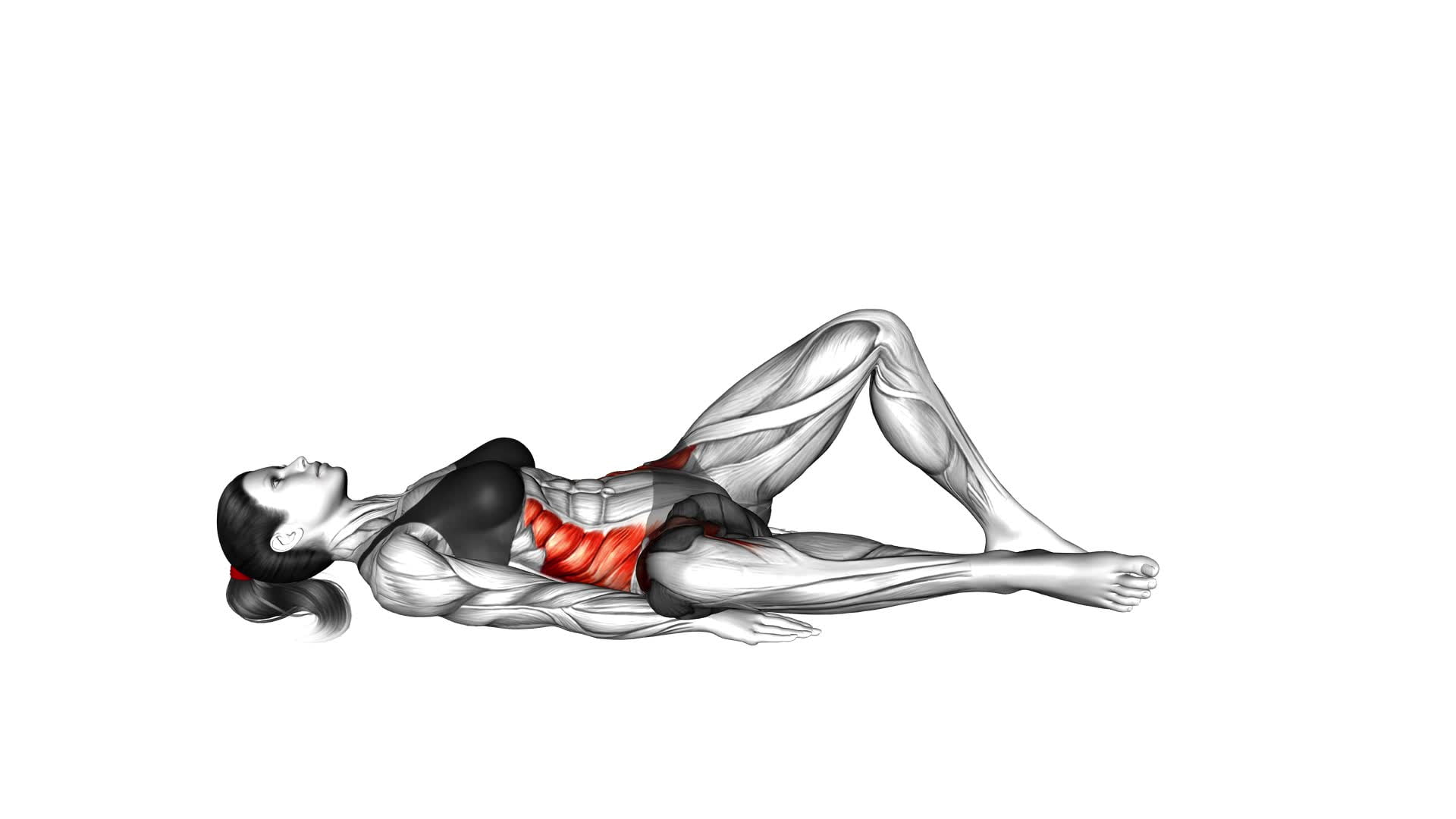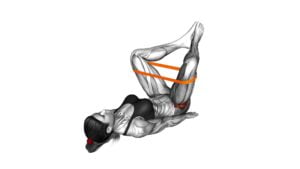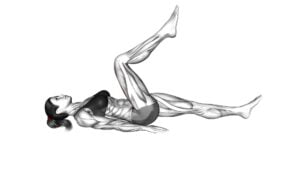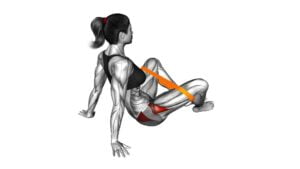Lying Hip Abduction Knee Bent (female) – Video Exercise Guide & Tips

Are you a female looking to strengthen your hip muscles? If so, this article is for you!
Watch This Exercise Video
In this video exercise guide, we will walk you through the proper form and technique for the lying hip abduction with a bent knee. This exercise is great for targeting your hip abductors and improving overall hip stability.
Watch the video and follow our tips to maximize the effectiveness of this exercise. Let's get started!
Key Takeaways
- Lying Hip Abduction Knee Bent improves hip strength and stability.
- This exercise targets hip muscles, including gluteus medius and minimus.
- Lying Hip Abduction Knee Bent enhances stability during walking, running, and jumping.
- It prevents and alleviates hip pain.
Benefits of Lying Hip Abduction Knee Bent
You will experience improved hip strength and stability with the lying hip abduction knee bent exercise. This exercise specifically targets the muscles in your hips, including the gluteus medius and minimus. By strengthening these muscles, you can enhance your stability during movements such as walking, running, and jumping.
One of the key benefits of the lying hip abduction knee bent exercise is its ability to prevent and alleviate hip pain. Weak hip muscles can lead to imbalances and compensations in your lower body, which can result in hip pain or discomfort. By regularly performing this exercise, you can strengthen and stabilize your hips, reducing the risk of injury and pain.
Additionally, the lying hip abduction knee bent exercise offers variations to target different muscle groups. For example, you can modify the exercise by using resistance bands or ankle weights to increase the intensity. You can also try performing the exercise with your legs straight for a greater challenge.
Equipment Needed for Lying Hip Abduction Knee Bent
To perform the lying hip abduction knee bent exercise, you'll need a mat or a comfortable surface to lie on. This will provide support and cushioning for your body as you perform the movement. In addition to the mat, you may also want to have a small towel or pillow to place under your head for added comfort.
When it comes to equipment, there aren't many variations for the lying hip abduction knee bent exercise. The main focus is on using your own body weight to engage and strengthen the muscles of the hip and glutes. However, if you want to add some resistance to the exercise, you can use ankle weights or resistance bands placed around your thighs. These will provide additional challenge and help to further activate the muscles.
Incorporating equipment into your lying hip abduction knee bent routine can add variety to your workouts and help you progress in your fitness journey. Whether you choose to use a mat, towel, or resistance bands, it's important to listen to your body and choose equipment that feels comfortable and safe for you.
Now that you know what equipment you need for the lying hip abduction knee bent exercise, let's move on to the next section where we'll discuss the proper form and technique for performing this exercise.
Proper Form and Technique for Lying Hip Abduction Knee Bent
Now that we've discussed the equipment needed for the lying hip abduction knee bent exercise, how can you ensure proper form and technique? Paying attention to your form is crucial to maximize the benefits of this exercise and minimize the risk of injury.
Here are some tips to help you maintain proper form and technique:
- Position yourself on your side with your knees slightly bent and your feet together.
- Keep your core engaged throughout the exercise to maintain stability and control.
- As you raise your top leg, focus on using your glutes and outer hip muscles to lift the leg, rather than relying on momentum or swinging.
By following these guidelines, you can ensure that you're performing the lying hip abduction knee bent exercise correctly and effectively. It's important to note that improper form and technique can lead to common mistakes such as using the lower back instead of the glutes, or allowing the top leg to rotate forward or backward. Remember to listen to your body and avoid any movements or positions that cause discomfort.
Additionally, there are variations of this exercise that you can explore, such as using a resistance band or ankle weights to increase the intensity.
Common Mistakes to Avoid During Lying Hip Abduction Knee Bent
One common mistake to avoid during the lying hip abduction knee bent exercise is relying on momentum or swinging to lift your top leg instead of using your glutes and outer hip muscles. This is a common mistake that can compromise the effectiveness of the exercise and potentially lead to injury. To ensure proper form and maximize the benefits of the exercise, it's important to focus on engaging the targeted muscles and performing the movement in a controlled manner.
Another common mistake to avoid is allowing your bottom leg to lift off the ground or rotate inward. This can shift the emphasis away from the glutes and outer hip muscles, and instead engage other muscles that aren't the primary focus of the exercise. To prevent this, maintain a stable position throughout the movement, keeping your bottom leg firmly planted on the ground and ensuring that your hips remain square.
Additionally, it's important to avoid using excessive resistance or weights that are too heavy for your current strength level. This can lead to compensatory movements and improper form, increasing the risk of injury. Start with lighter weights and gradually increase the resistance as your strength improves.
Tips for Maximizing the Effectiveness of Lying Hip Abduction Knee Bent
To maximize the effectiveness of the lying hip abduction knee bent exercise, focus on maintaining proper form and engaging your glutes and outer hip muscles throughout the movement. Here are some tips to help you maximize your results:
- Keep your core engaged: By activating your core muscles, you create a stable base for the exercise and ensure that your hips and pelvis are properly aligned.
- Control the movement: Avoid using momentum to swing your leg outwards. Instead, focus on a slow and controlled motion, emphasizing the contraction of your glutes and outer hip muscles.
- Experiment with variations and modifications: To keep challenging your muscles and prevent plateauing, try different variations of the exercise. You can increase the intensity by adding resistance bands or ankle weights, or you can modify the exercise by performing it on an incline bench or stability ball.
Frequently Asked Questions
How Many Calories Can I Expect to Burn With Lying Hip Abduction Knee Bent?
When performing the lying hip abduction knee bent exercise, you can expect to burn calories and activate your muscles. This exercise targets the hip abductor muscles, which are responsible for moving your leg away from your body.
The number of calories burned will depend on factors such as your weight, intensity, and duration of the exercise. Incorporating this exercise into your routine can help increase calorie expenditure and strengthen your hip muscles.
Can I Do Lying Hip Abduction Knee Bent if I Have Knee or Hip Pain?
If you're experiencing knee or hip pain, it's important to listen to your body. Lying hip abduction knee bent may worsen your pain, so it's best to avoid this exercise if you're experiencing discomfort in those areas.
There are alternative exercises that can target the same muscles without putting strain on your knees or hips.
Consult with a healthcare professional or a qualified trainer to find the best alternatives for your specific needs.
How Long Should I Hold Each Repetition of Lying Hip Abduction Knee Bent?
When performing the lying hip abduction knee bent exercise, it's important to focus on the proper form. Before considering how long to hold each repetition, ensure that your body alignment is correct.
Maintain a stable position with your knee bent and your hip lifted. Once you have established the correct form, aim to hold each repetition for a few seconds, gradually increasing the duration as you progress.
Remember to listen to your body and stop if you experience any pain or discomfort.
Can Lying Hip Abduction Knee Bent Help With Postpartum Recovery?
Lying hip abduction knee bent is a great exercise for postpartum recovery. It helps improve overall strength and stability, which are important for regaining your pre-pregnancy fitness level.
This exercise can be modified during the postpartum period to ensure safety and effectiveness. By incorporating lying hip abduction knee bent into your workout routine, you can target the muscles involved in hip abduction, improving your overall strength and stability as you recover from childbirth.
Can I Do Lying Hip Abduction Knee Bent if I Have a Knee or Hip Replacement?
If you've had a knee or hip replacement, it's important to modify exercises to prevent injury and aid in your recovery.
Lying hip abduction with a bent knee may not be suitable for you in this case.
You should consult with your healthcare provider or physical therapist for specific knee replacement exercise modifications or hip replacement exercise modifications that are safe and beneficial for your condition.
They can provide you with personalized guidance to ensure you're engaging in appropriate exercises.
Conclusion
In conclusion, the lying hip abduction knee bent exercise is a beneficial way to strengthen and tone the hip muscles. By using proper form and technique, you can maximize the effectiveness of this exercise.
Remember to avoid common mistakes and use the necessary equipment to ensure safety and optimal results.
Incorporating this exercise into your fitness routine can enhance your overall lower body strength and stability.

Author
Years ago, the spark of my life’s passion ignited in my mind the moment I stepped into the local gym for the first time. The inaugural bead of perspiration, the initial endeavor, the very first surge of endorphins, and a sense of pride that washed over me post-workout marked the beginning of my deep-seated interest in strength sports, fitness, and sports nutrition. This very curiosity blossomed rapidly into a profound fascination, propelling me to earn a Master’s degree in Physical Education from the Academy of Physical Education in Krakow, followed by a Sports Manager diploma from the Jagiellonian University. My journey of growth led me to gain more specialized qualifications, such as being a certified personal trainer with a focus on sports dietetics, a lifeguard, and an instructor for wellness and corrective gymnastics. Theoretical knowledge paired seamlessly with practical experience, reinforcing my belief that the transformation of individuals under my guidance was also a reflection of my personal growth. This belief holds true even today. Each day, I strive to push the boundaries and explore new realms. These realms gently elevate me to greater heights. The unique combination of passion for my field and the continuous quest for growth fuels my drive to break new ground.







